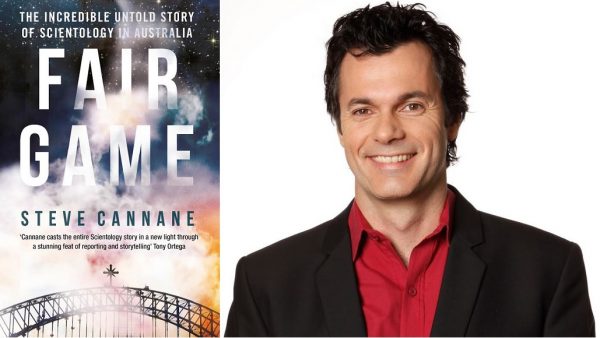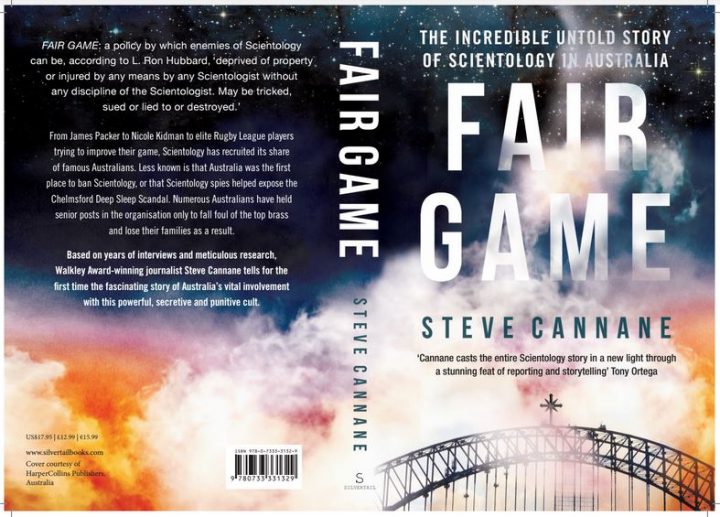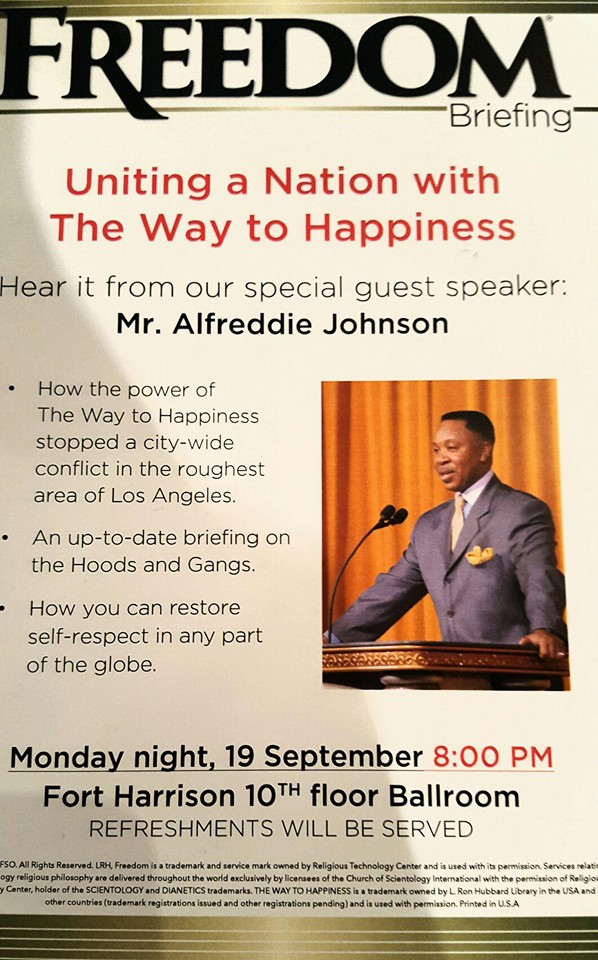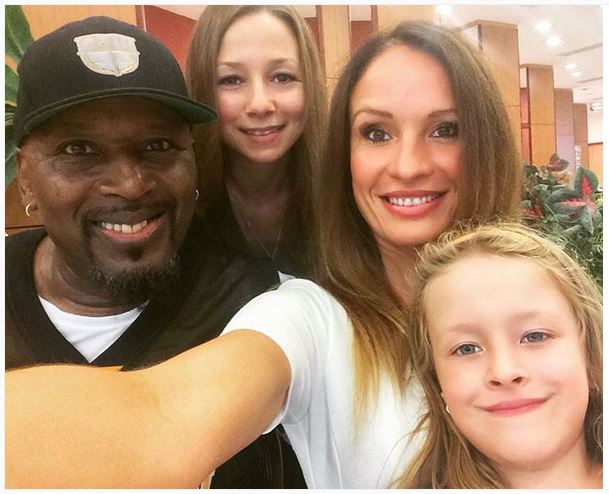Steve Cannane’s book Fair Game was released today around the world by HarperCollins (in Australia) and Silvertail Books (UK, US, Canada). Steve gave us an advance look at the book, and so we sent him some questions about some of the things we found really remarkable in it.
The Bunker: Fair Game begins with a harrowing tale of escape from the Sea Org. Conditions are so desperate in Scientology’s private navy, you found a former member who had nearly starved while subsisting on grass in a city park just so he could elude his captors. We’ll remind people that you also broke the Valeska Paris story with ABC, another hard to believe story about imprisonment involving a young woman in the Sea Org. And we’ve also heard about the labor camps near Sydney, including the stories of child labor and confinement. Steve, what is it about Australia and these brutal stories of mistreatment inside Scientology?
Steve: Sydney’s RPF punishment camp, where Jose Navarro, Valeska Paris, and Chris Guider were all sent to, became a dumping ground for Scientology in the US. It’s almost as if they didn’t realize transportation to Australia ended in 1868. Jose’s story is extraordinary – he was sent there because he fell in love with a woman on the Freewinds and Scientology decided that their relationship was forbidden. They separated the pair by sending Jose to Sydney. After he escaped, and as you mentioned, survived by eating grass in one of Sydney’s most beautiful parklands, Australian authorities deemed that he was a victim of human trafficking and he was granted a protection visa on that basis. I start the book with Jose’s story because it’s an amazing tale that has never been told before and I wanted to frame the rest of the book in these terms, how do you get to a situation where an organization that calls itself a religion, that claims it believes in freedom and human rights, that is given tax exempt status as a charity, can enslave and traffic its members and treat Australia like its own personal penal colony? Jose’s story becomes the launching pad for an investigation into Hubbard, Scientology, and how it all became intertwined with Australia.
The Bunker: You have put together one of the best tellings of Scientology’s early history that we’ve ever read. And we know how hard that is to do. We especially like the way you showed how much what happened to Scientology founder L. Ron Hubbard and his followers in Australia led to some of the organization’s more ruthless policies. Is that what you want readers in other parts of the world to take away — Australia’s surprising influence on what Scientology became?
Steve: Before I even decided to write this book, it was Mike Rinder who alerted me to the almost disproportionate role Australia played in Scientology history. As he put it, Australia was the first country where Scientology was banned, the first country where its highest court recognized it as a religion, and the first country where a number of journalists pushed back quite vigorously against their intimidation tactics. Throw into the mix the Australians who rose to high positions in Scientology like Yvonne Gillham, Mike Rinder, Terri Gamboa, and Janis Grady, and see the large Australian characters who have had their own notable interactions with Scientology like Rupert Murdoch, Julian Assange, Nicole Kidman, and James Packer, then you have a pretty solid basis for a book. Then of course you have Hubbard’s inglorious war record in Brisbane. When I started researching the topic in depth, a pattern emerged. Events in Australia had a big influence on Hubbard and Scientology policy. The establishment of the Guardian’s Office can be directly linked to the ban in Australia. The creation of the Sea Org evolves out of the pressure Hubbard found himself under from British politicians who were using the Anderson Inquiry findings to criticize Scientology. I think even readers of the Bunker, who know their Scientology history well, will be in for a few surprises about how events in Australia shaped Scientology.
The Bunker: One of the truly impressive sections of the book is the deep dive you make into the state of Victoria’s investigation into Scientology in the mid 1960s. We were struck by the argument you make that it was one unhappy customer who ended up producing what became the world’s first government investigation and ban on Scientology in the world. That seems to be a lesson that Scientology has never learned from. Did you sense that you were describing not only what ailed Scientology in the 1960s, but also the challenges it faces today?
Steve: Absolutely! Scientology continues to make the same mistakes again and again, and will continue to do so indefinitely because its followers and its leadership are prisoners to Hubbard’s dogma. As the indisputable source, Hubbard dictated that you must always attack critics, and that allows for absolutely no nuance or subtlety or flexibility when it comes to dealing with dissent. Sliming critics, spying on them and harassing their relatives may silence the more timid among us, but for certain types it just riles them. When the Scientologists tried to censor the Tom Cruise turtleneck video it triggered a force field of activism from Anonymous. When its lawyers threaten to sue Julian Assange in the 1990s for publishing four lines from the OT levels, they created an enemy for life and when he sets up Wikileaks he publishes the 612-page manual with all the course materials for all eight OT levels! If Hubbard had just given one angry customer a refund in Melbourne back in the 1960s, instead of sending him abusive letters and stirring him up, Scientology history could have been very, very different. So yes, the same mistakes are repeated all over.
The Bunker: Two people we’ve been looking forward to see go public are Janis Grady and Terri Gamboa, who are sisters and were among the original Commodore’s Messengers on board the Apollo with L. Ron Hubbard. Both spoke to you for this book. What were the most surprising things you learned from them?
Steve: Both knew Hubbard intimately having worked as Messengers on board the Apollo and were able to give fascinating insights into his character and what was going on back then. They also know a lot about David Miscavige, particularly Terri. Neither has ever told their story publicly before in the twenty-six years since they left the Sea Org, and it’s a real privilege to be able to do so in Fair Game. Terri’s escape story is amazing and I have new details about the spying operation where their business was infiltrated by Dave Lubow and Terri eventually was sent out of the country at the time of the IRS struggles. This is one of my favorite chapters in the book and is chock full of new revelations.
The Bunker: We’ve interviewed Joe Reaiche in the past, and we’ve seen reports with Chris Guider. But you really make the case that Australian rugby league might have been just about the most Scientology-infiltrated professional sport ever. Why rugby league? And is there a lasting effect today?
Steve: Rugby league is the most popular winter sport in Sydney, and at one moment in time produced three Sea Org members. Joe was the first to be recruited and he in turn helped recruit Chris Guider and Pat Jarvis (who played for Australia). Others dabbled in it, and another player became a staff member in the Sydney org. Chris and Pat played for St George, a very famous club in Sydney – imagine something equivalent to the San Francisco 49ers. A Scientology recruiter was targeting players and it caused real divisions in the club and the team. The captain of the St George rugby league was a police detective in the Armed Hold Up Squad and at one stage he offered to help bust Chris out of Scientology. It is one of the most bizarre clashes of cultures you can imagine, and even senior rugby league reporters don’t know the full story of what went on.
The Bunker: Tell us about interviewing Julian Assange. Does he still keep an eye on Scientology, which at one time he was instrumental in exposing?
Steve: I interviewed Julian on the phone from the Ecuadorian embassy very early on in the research process. I am sure he does keep an eye on Scientology because he sees it as an authoritarian organization that deserves to be exposed. As an advocate for transparency and freedom of information he is naturally at loggerheads with secretive organizations like Scientology that try and control information and censor others. From my chat with him I would say his knowledge and understanding of Scientology was very good – and he does of course have a personal interest in them because they once subjected him to a Noisy Investigation!
The Bunker: Americans will be fascinated by your chapter on Tom Cruise and Nicole Kidman. Give us a brief rundown on how you’ve advanced the story on wiretapping Kidman’s phone. It looked like you got pretty good cooperation from Marty Rathbun, and lots of denials from Tom Cruise’s attorney, Bert Fields.
Steve: I spoke to Marty Rathbun twice for the book. Once very early on in my research, and the second time in June 2015. Marty wasn’t too keen to talk the second time. I got the feeling he was done talking about Scientology. But I badgered him and lucky for me he agreed to talk. I remember interviewing him at 3 am Sydney time and the information he gave me about Kidman and Cruise, and James Packer, was fascinating, details he had not revealed previously. It wasn’t information he had been hiding, I believe it was more of a case that he hadn’t been asked certain questions. For example in Going Clear he revealed details about the wiretapping operation on Nicole Kidman, but I wanted to know who was Nicole talking to that was upsetting Tom. Marty said straight out – Russell Crowe – and that they had done a big background investigation on him. Marty said there was nothing untoward about what Russell was doing – that he was being a good friend to Nicole in a time of need. Now Bert Fields denies Cruise had anything to do with phone tapping, and there’s a few other comments from him in the book, but I have some other new revelations about this operation as well. I also have more details about the role Michael Doven played as Scientology spy in the house of Cruise/Kidman, which I first saw reported by you at the Village Voice, and what happened when Marty took Nicole through the PTS/SP course — I may be wrong, but I have not seen that reported before.
The Bunker: Scientology is struggling in Australia, but the recent opening of a new “Advanced Org” near Sydney indicates that it continues to be an important location to David Miscavige. Can you give us some prediction for what’s likely to happen to Australia over the next few years?
Steve: I believe Scientology will continue to go backwards in Australia. It’s virtually impossible to recruit young Australians to the organization. The Internet has killed its business model in western countries. Any young person interested in Scientology has seen all the horror stories online. They may be opening new buildings, but their numbers are dwindling. In the last census figures in Australia they had dropped by 13 percent to 2,163. New census figures should be out in the next year, if they do go up, I would bet it would be on the back of flying in Taiwanese Scientologists on religious visas to make sure they were in Australia on census night!
——————–
Mike Rinder challenges Scientology beliefs, again
Just noticed that former Scientology spokesman Mike Rinder has a particularly strong piece today that looks at pronouncements by Scientology founder L. Ron Hubbard which have been demonstrated to be “ridiculous.”
And he asks, why hasn’t Hubbard returned, as he predicted? If Scientology really could conquer death, as it claimed, it would be plainly demonstrated and in no time at all the entire world would be clamoring to join.
For people who were never in Scientology, these might seem like obvious questions to ask. But for a Scientologist — particularly one as prominent and popular as Mike Rinder — it’s pretty earthshaking for him to confront his fellow former church members with such questions.
And just a couple of days, that is, after Mike’s former pal, Marty Rathbun, included Rinder’s blog on a list of “fora” he dismissed as parts of an “anti-Scientology cult.”
If anyone had any questions about where Rinder stands on Scientology belief, they just got their answer.
——————–
Bonus items from our tipsters
Still no new edition of Freedom magazine (the last issue was June/July), but there’s a Freedom “briefing” tonight with Alfreddie? That’s gotta be good.
What the Crap Nebula, Emily?
Chill EB in Budapest — hey, what happened to the chin thingies?
——————–
Jim Carrey sued by mystery man who had married Cat White
You’ve probably seen the breaking news around the tabloid universe as a lawsuit was filed today by Mark Burton, who was actually married to Cat White when she died last year.
Cat was found with various prescription medicines that had been prescribed to Jim Carrey under a fake name, “Arthur King,” and so Burton is accusing Carrey of all sorts of unseemly behavior in relation to her death.
But the media rushing to this story isn’t stopping to wonder who Mark Burton is, and how his marriage to Cat was known to almost none of her friends at the time. Last year, we uncovered some really surprising things about Burton and who his parents are.
We’ll have more on the story tomorrow.
——————–
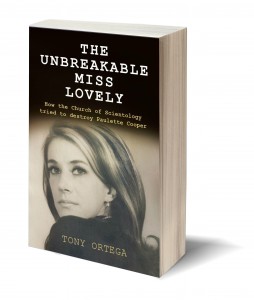 Posted by Tony Ortega on September 19, 2016 at 07:00
Posted by Tony Ortega on September 19, 2016 at 07:00
E-mail tips and story ideas to tonyo94 AT gmail DOT com or follow us on Twitter. We post behind-the-scenes updates at our Facebook author page. After every new story we send out an alert to our e-mail list and our FB page.
Our book, The Unbreakable Miss Lovely: How the Church of Scientology tried to destroy Paulette Cooper, is on sale at Amazon in paperback and Kindle editions. We’ve posted photographs of Paulette and scenes from her life at a separate location. Reader Sookie put together a complete index. More information about the book, and our 2015 book tour, can also be found at the book’s dedicated page.
Learn about Scientology with our numerous series with experts…
BLOGGING DIANETICS: We read Scientology’s founding text cover to cover with the help of L.A. attorney and former church member Vance Woodward
UP THE BRIDGE: Claire Headley and Bruce Hines train us as Scientologists
GETTING OUR ETHICS IN: Jefferson Hawkins explains Scientology’s system of justice
SCIENTOLOGY MYTHBUSTING: Historian Jon Atack discusses key Scientology concepts
Other links: Shelly Miscavige, ten years gone | The Lisa McPherson story told in real time | The Cathriona White stories | The Leah Remini ‘Knowledge Reports’ | Hear audio of a Scientology excommunication | Scientology’s little day care of horrors | Whatever happened to Steve Fishman? | Felony charges for Scientology’s drug rehab scam | Why Scientology digs bomb-proof vaults in the desert | PZ Myers reads L. Ron Hubbard’s “A History of Man” | Scientology’s Master Spies | Scientology’s Private Dancer | The mystery of the richest Scientologist and his wayward sons | Scientology’s shocking mistreatment of the mentally ill | Scientology boasts about assistance from Google | The Underground Bunker’s Official Theme Song | The Underground Bunker FAQ
Our Guide to Alex Gibney’s film ‘Going Clear,’ and our pages about its principal figures…
Jason Beghe | Tom DeVocht | Sara Goldberg | Paul Haggis | Mark “Marty” Rathbun | Mike Rinder | Spanky Taylor | Hana Whitfield





